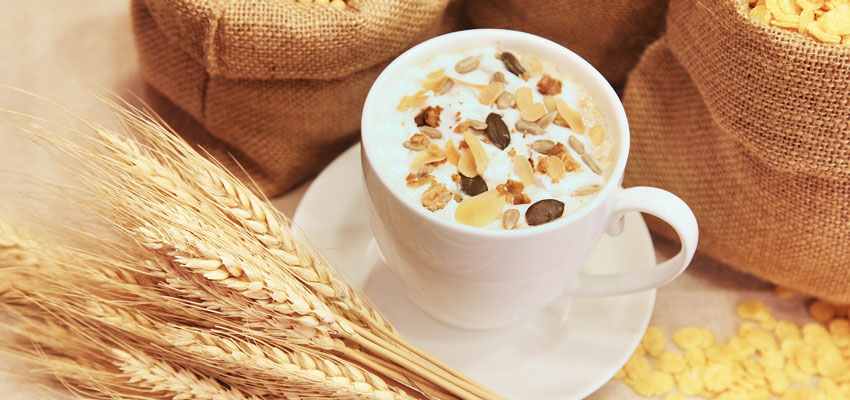The previous indicative levels for the mycotoxins T-2 and HT-2 toxin are now maximum residue levels for cereals and cereal products. They will apply from 1 July 2024.
T-2 and HT-2 toxins are mycotoxins from the trichothecene group, which are produced by fungi of the genus Fusarium. They are mainly found on cereals (oats, barley, wheat, rye, maize and rice) and love warm, humid weather.
The T-2 toxin is rapidly metabolised into a variety of products, with the HT-2 toxin being a major metabolite. Both toxins are harmful to humans and animals. If contaminated grain is fed, the toxin can also pass into eggs or milk. Studies have shown that they are potent cytotoxins that can have a carcinogenic effect and weaken the immune system.
Once sufficient toxicological data was available, the EFSA proposed setting binding EU limits for these mycotoxins from 2020. These were published in of 9 April 2024 amending Regulation (EU) 2023/915 as regards maximum levels for T-2 and HT-2 toxins in food and will apply from 1 July 2024.
Annex I of the Regulation lists the specifications for the various product groups and processing stages:
|
1.9
|
T-2- und HT-2-Toxins
|
Maximum levels (μg/kg) (Sum T2/HT2) |
Remarks |
|
1.9.1 |
Unprocessed cereal grains except products listed in 1.9.1.1, 1.9.1.2, 1.9.1.3 and 1.9.1.4 |
50 |
Except unprocessed maize grains intended to be processed by wet milling and except rice. The maximum level applies to unprocessed cereal grains placed on the market for first-stage processing (6) |
|
1.9.1.1 |
Unprocessed malting barley grains |
200 |
The maximum level applies to unprocessed malting barley grains placed on the market for first-stage processing (6) . |
|
1.9.1.2 |
Unprocessed barley grains other than malting barley grains |
150 |
The maximum level applies to unprocessed barley grains placed on the market for first-stage processing (6) . |
|
1.9.1.3 |
Unprocessed maize grains and unprocessed durum wheat grains
|
100 |
Except unprocessed maize grains for which it is evident, e.g. through labelling or destination, that they are intended for use in a wet milling process only (starch production). The maximum level applies to unprocessed maize grains and unprocessed durum wheat grains placed on the market for first-stage processing (6) . |
|
1.9.1.4 |
Unprocessed oat grains with inedible husk |
1250 |
The maximum level applies to unprocessed oat grains with husk placed on the market for first-stage processing (6). The maximum level applies to the oat grains with the inedible husk included. |
|
1.9.2 |
Cereals placed on the market for the final consumer except products listed in 1.9.2.1 and 1.9.2.2 |
20 |
Except rice. |
|
1.9.2.1 |
Oats placed on the market for the final consumer |
100 |
|
|
1.9.2.2 |
Barley, maize and durum wheat placed on the market for the final consumer |
50 |
|
|
1.9.3 |
Milling products of cereals except products listed in 1.9.3.1 and 1.9.3.2 |
20 |
Except milling products of rice. |
|
1.9.3.1 |
Milling products of oats (including oat bran) |
100 |
|
|
1.9.3.2 |
Bran from cereals other than oats and milling products of maize |
50 |
|
|
1.9.4 |
Bakery wares except products listed in 1.9.5, pasta, cereal snacks and breakfast cereals except products listed in 1.9.6, 1.9.7 and 1.9.8 |
20 |
Except rice products. Including small bakery wares. Pasta means pasta (dry) with a water content of approximately 12 %. |
|
1.9.5 |
Bakery wares containing at least 90 % milling products of oats |
100 |
Except rice products. Including small bakery wares. |
|
1.9.6 |
Oat flakes |
100 |
|
|
1.9.7 |
Breakfast cereals consisting of at least 50 % of cereal bran, milling products of oat grains, milling products of maize grains, whole oat grains, barley grains, maize grains or durum wheat grains, and consisting of less than 40 % of milling products of oat grains and whole oat grains |
50 |
|
|
1.9.8 |
Breakfast cereals consisting of at least 50 % of cereal bran, milling products of oat grains, milling products of maize grains, whole oat grains, barley grains, maize grains or durum wheat grains, and of at least 40 % of milling products of oat grains and whole oat grains |
75 |
|
|
1.9.9 |
Baby food and processed cereal-based food for infants and young children(3) |
10 |
Except rice products. The maximum level applies to the dry matter (5) of the product as placed on the market. |
|
1.9.10 |
Food for special medical purposes intended for infants and young children (3) |
10 |
Except rice products. The maximum level applies to the dry matter (5) of the product as placed on the market.’ |
Please refer to the regulation for the footnote texts.
That sounds pretty complicated, but here it is...
YOUR PLUS: The AGROLAB GROUP laboratories not only determine the content of mycotoxins in all food and animal feed, but also evaluate the results in accordance with the applicable legal provisions. Each analysis report summarises the measurement results in a clear and easy-to-understand assessment.
Author: Dr. Frank Mörsberger

 Contact
Contact

 Contact
Contact Career
Career